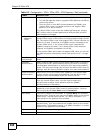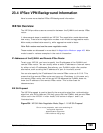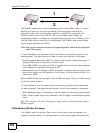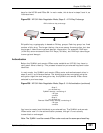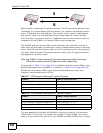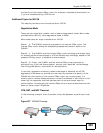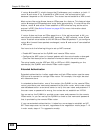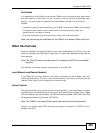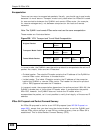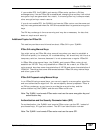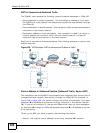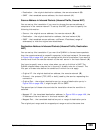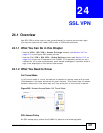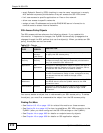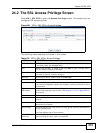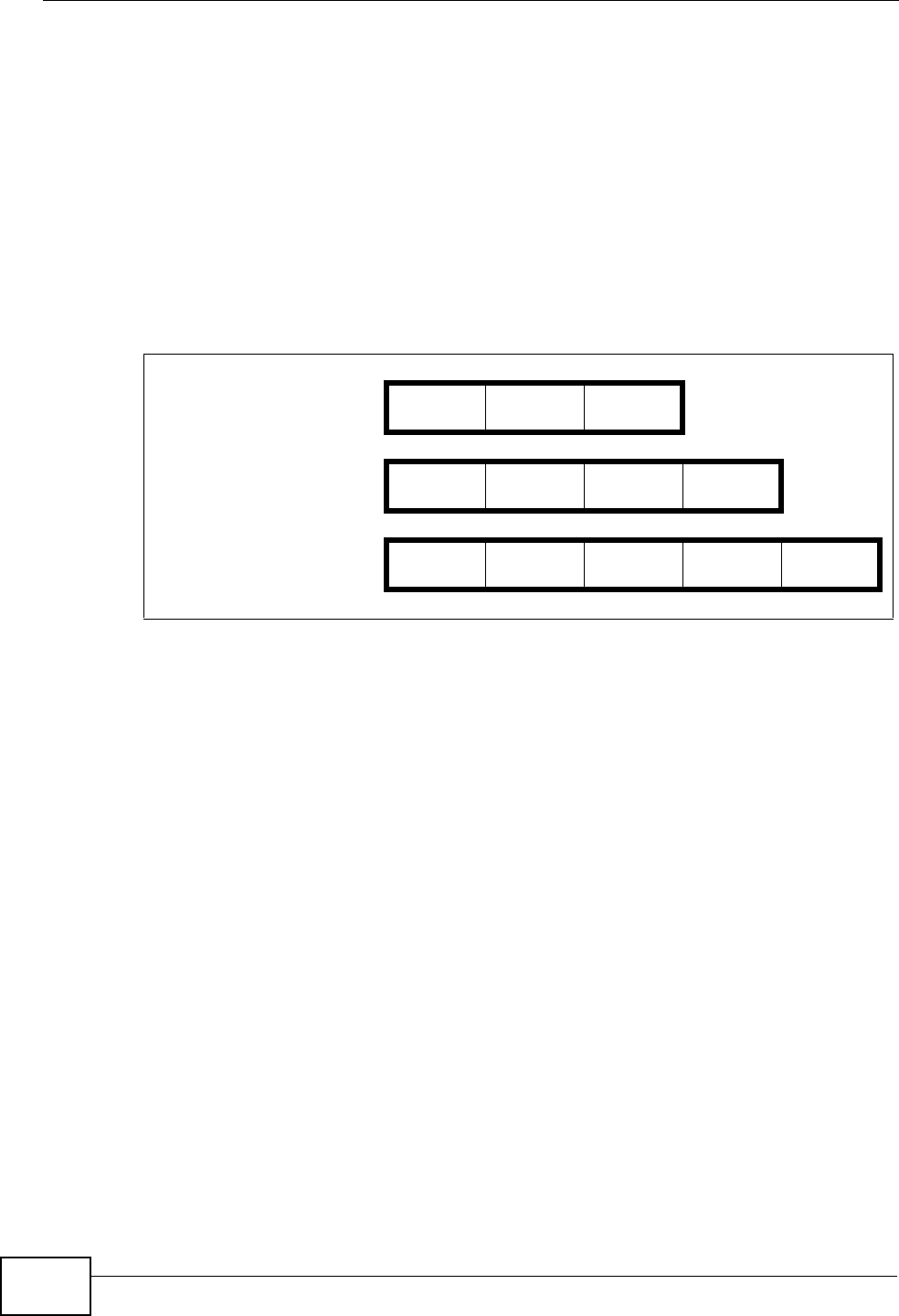
Chapter 23 IPSec VPN
ZyWALL USG 50 User’s Guide
406
Encapsulation
There are two ways to encapsulate packets. Usually, you should use tunnel mode
because it is more secure. Transport mode is only used when the IPSec SA is used
for communication between the ZyWALL and remote IPSec router (for example,
for remote management), not between computers on the local and remote
networks.
Note: The ZyWALL and remote IPSec router must use the same encapsulation.
These modes are illustrated below.
In tunnel mode, the ZyWALL uses the active protocol to encapsulate the entire IP
packet. As a result, there are two IP headers:
• Outside header: The outside IP header contains the IP address of the ZyWALL or
remote IPSec router, whichever is the destination.
• Inside header: The inside IP header contains the IP address of the computer
behind the ZyWALL or remote IPSec router. The header for the active protocol
(AH or ESP) appears between the IP headers.
In transport mode, the encapsulation depends on the active protocol. With AH, the
ZyWALL includes part of the original IP header when it encapsulates the packet.
With ESP, however, the ZyWALL does not include the IP header when it
encapsulates the packet, so it is not possible to verify the integrity of the source IP
address.
IPSec SA Proposal and Perfect Forward Secrecy
An IPSec SA proposal is similar to an IKE SA proposal (see IKE SA Proposal on
page 399), except that you also have the choice whether or not the ZyWALL and
remote IPSec router perform a new DH key exchange every time an IPSec SA is
established. This is called Perfect Forward Secrecy (PFS).
Figure 238 VPN: Transport and Tunnel Mode Encapsulation
Original Packet IP Header TCP
Header
Data
Transport Mode Packet IP Header AH/ESP
Header
TCP
Header
Data
Tunnel Mode Packet IP Header AH/ESP
Header
IP Header TCP
Header
Data



